Sealift is America’s Achilles Heel in the Age of Great Power Competition
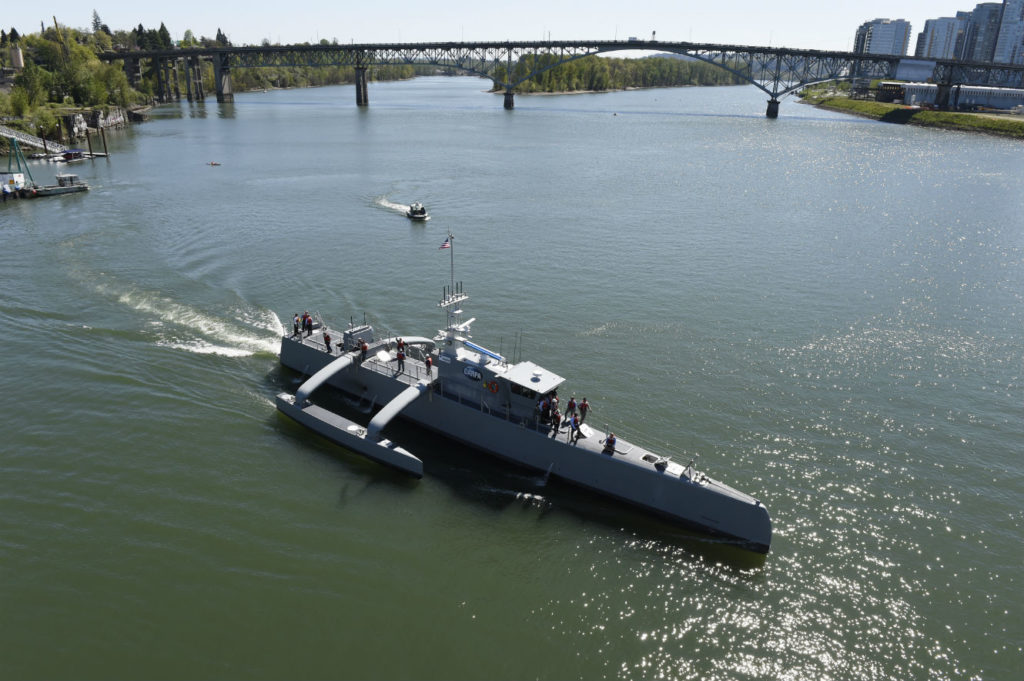
In 1921, U.S. Navy submarine R-14 returned to Pearl Harbor under sail, having run out of fuel while on a rescue mission. Nearly a century later, the idea that a U.S. Navy combatant would run out of fuel is the stuff of Hollywood fantasy. With a globally distributed network of military infrastructure and a fleet of cargo and tanker ships, we know that logistical needs will never constrain operational flexibility. After all, it is the backbone of America’s ability to project hard power around the world. This capability has evolved significantly since the genesis of the underway replenishment in World War I, and has enabled the United States and allied nations to decisively defeat Iraq in the First Persian Gulf War, supply concurrent ground campaigns in Iraq and Afghanistan, and maintain nearly 100 continuously deployed naval combatants since the 1990s.
This force is also at the ragged edge of its ability to sustain current global operations, due in large part to a dwindling pool of merchant mariners and decaying sealift assets. This is worrisome because it is occurring during routine peacetime operations, without the impact of uneconomic dispersed operations and combat losses. It is important to delve into the problems facing America’s maritime power projection — specifically the diminishing capacity of the U.S. merchant marine today and its impact upon future naval operations in an era of great power competition. Upon a sound understanding of these problems, we shall then explore a solution involving one of the Navy’s least publicized assets: the Sea Hunter unmanned vessel.
The Primer
U.S. sealift capacity is made up of several organizations, including the Combat Logistics Force, the surge sealift force, the Ready Reserve Force, and the Maritime Security Program.
The Combat Logistics Force, owned and operated by the Military Sealift Command, is dedicated to supporting naval combatants with food, fuel, munitions, and various other supplies far from established logistics facilities. This force enables the underway replenishment of U.S. Navy surface combatants while out at sea, allowing them to remain on station indefinitely. Without these or comparable allied vessels, surface combatants would be required to transit to friendly ports in order to resupply. Comprising only 29 ships, the Combat Logistics Force is made up of two fast combat support ships, 15 fleet replenishment oilers, and 12 dry cargo and ammunition ships. Without the Combat Logistics Force, the ability of the Navy’s warships to project power would be severely curtailed because they would be tethered to friendly ports.
The surge sealift force and Ready Reserve Force (hereafter referred to as the surge force) are owned and operated by the Department of Transportation and are kept at varying states of operational readiness to transport “military cargo to critical areas of operation.” Per the Government Accountability Office,
Nearly all of the surge sealift fleet is expected to…provide millions of square feet of cargo carrying capacity…to transport Army, Marine Corps, and other units’ equipment, combat support equipment, and initial supply, as called for in the initial phases of various Department of Defense operational plans.
This is the fleet that carried the initial equipment to the Persian Gulf to arm coalition forces during Operation Desert Shield. Today it is composed of 61 federally owned vessels.
On average, these ships are 43 years old. Surge force vessels are driven by outdated propulsion plants, usually aging steam turbines, for which the pool of qualified operators and maintainers is small and rapidly declining. Years of increased operational demand and underfunded maintenance budgets has resulted in declining ship availability. As noted in recent Government Accountability Office studies, these ships are exhibiting readiness issues:
[M]ission-limiting equipment casualties — incidents of degraded or out-of-service equipment — have increased over the past five years, and maintenance periods are running longer than planned, indicating declining materiel readiness across both [Combat Logistics Force and surge force] fleets.
This worrying trend has translated to an increase in mission limiting equipment casualties by 77 percent from 2012 to 2016. This reduced the operational availability of fleet replenishment oilers by 16 percent and fast combat support ships by 8 percent, in turn decreasing the Navy’s ability to replenish at sea.
The government owned fleet is augmented “in times of war or national emergency” by vessels of the Maritime Security Program. Consisting of 60 “active, commercially viable, militarily useful, privately-owned U.S.-flag vessels and crews operating in U.S. international trades,” these vessels receive a significant annual subsidy in exchange for providing an additional “3.1 million square feet and over 103 thousand [deadweight tons] of tanker capacity” to the Department of Defense. These vessels have “delivered more than 90 percent of the cargoes to Afghanistan and Iraq to support U.S. and Coalition forces” along with their government owned counterparts.
Beyond the 60 vessels enrolled in the Maritime Security Program, there are only 22 additional U.S.-flagged vessels engaged in international trade and 100 privately owned vessels greater than 1,000 tons in domestic trade from which to draw in times of national emergency. Given that mariners who serve in Military Sealift Command and the surge fleet routinely alternate between civilian and government employment, there is significant concern that “due to the historically low number” of U.S.-flagged merchant vessels (see Figure 1), there might not be enough qualified mariners for sustained sealift operations. Given stringent requirements to register under the U.S. flag and cutthroat competition in the carrying trade, this is a situation that is unlikely to reverse itself in the near term, with significant impacts on the fleet’s ability to sustain the fight.
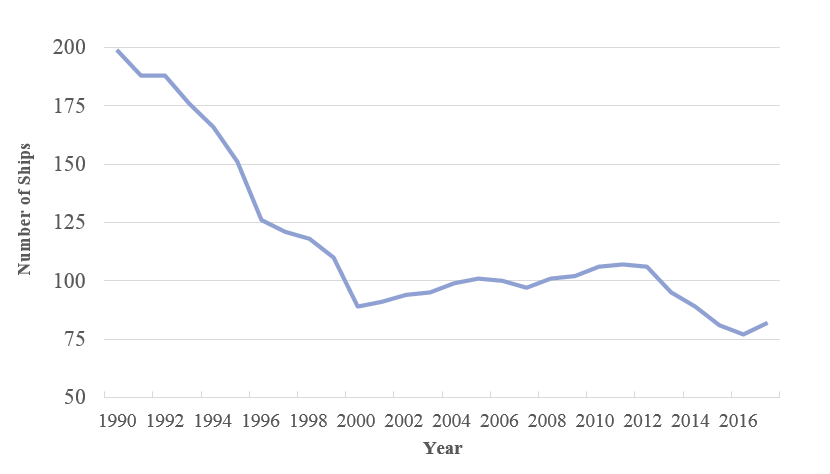
Figure 1: United States privately owned oceangoing self-propelled vessels 1,000 gross tons and above operating in international trades (1990 to Nov. 1, 2017)
As of late 2017, there is a “need [for] 11,678 mariners to man the shops [sic], and the pool of available, active mariners is 11,768. That means in a crisis every one of them would need to show up for the surge….” Due to the need to rotate civilian mariners from arduous duty to periods of rest and relaxation, there is effectively a shortage of “1,800 mariners…for any kind of long-term sustainment effort.” The Navy has recently acknowledged in testimony before Congress that it would be able to sustain supply efforts for “the first 30 days [of prolonged activation]…but after that things start to tail off, [and suppling the armed forces] really becomes an issue.”
The Problem
America’s ability to sustain its forces abroad and project power from the sea is brittle, tenuously maintained by an aging fleet that is undermaintained and overworked. This is worrying because it constrains operational effectiveness. As evidenced during routine peacetime operations, underway replenishments have decreased by 27 percent from 2011 to 2015, while in-port refueling now compose roughly 30 percent of surface combatant refueling. Given that the number of ships deployed since the end of the Cold War has consistently averaged around 100 (see Figure 2), this highlights the impact that decreased Combat Logistics Force availability has on constraining commanders during peacetime. This in turn raises the specter that the United States will be “unable to deliver the equipment, supplies, and forces called for in the initial phases of operational plans.” In a conflict against a peer adversary or great power, when many ports may be closed due to damage or diplomatic restrictions, the only assured source of resupply will be what the Navy can bring with it.
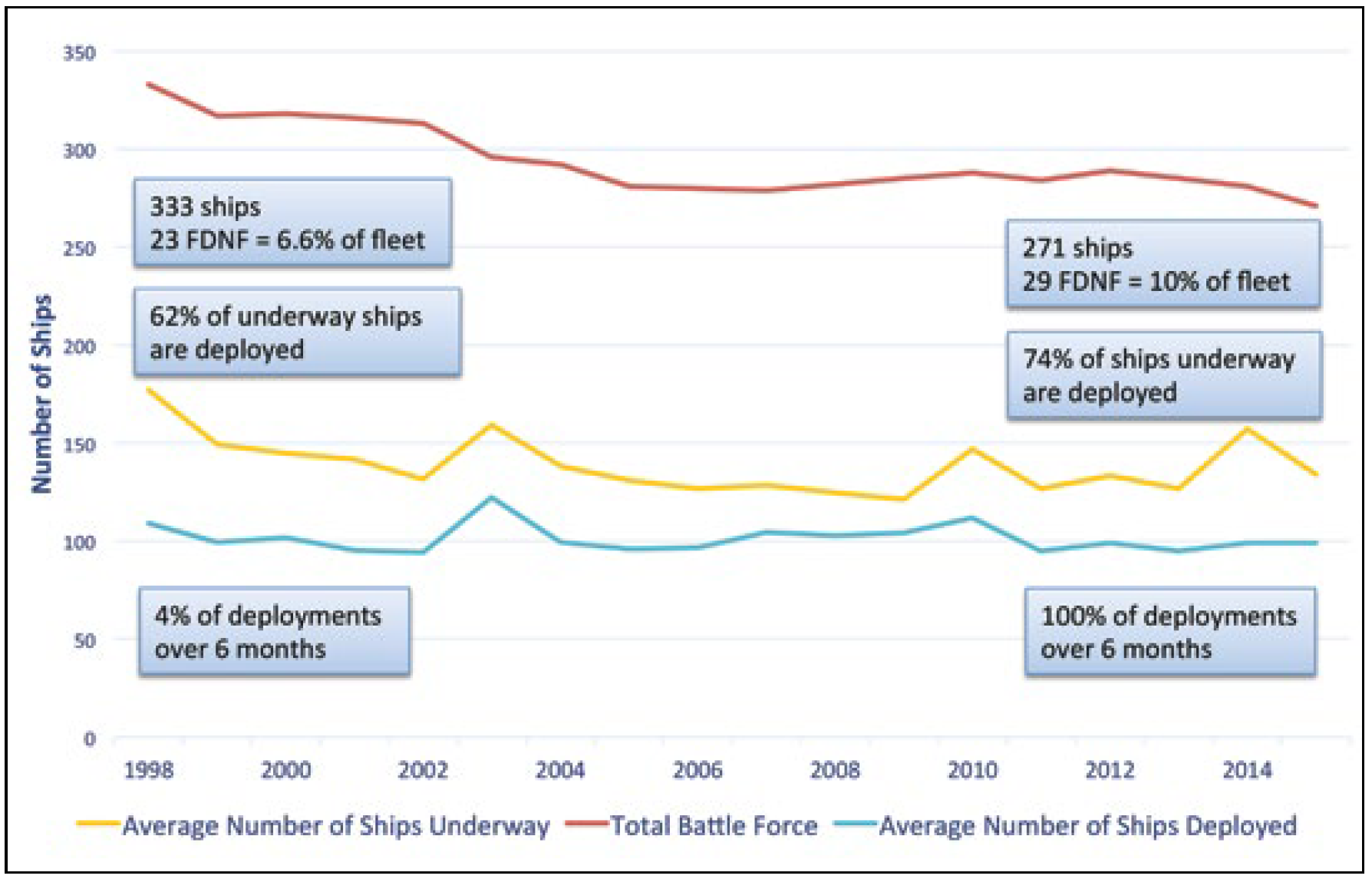
Figure 2: Navy ships deployed and underway, 1998 to 2014
As announced in the Navy’s 2018 Design for Maintaining Maritime Superiority 2.0, the fleet is shifting towards a concept called “Distributed Maritime Operations,” according to which it will conduct more widely dispersed operations to enhance the effectiveness of the surface fleet. This strategy is the U.S. Navy’s response to the maritime challenge posed by a rising China and a resurgent Russia, both of whom have built military capabilities that allow them to project kinetic force thousands of miles out to sea. When studying the impact of this greater geographic dispersion, the Government Accountability Office found that the geographic dispersion required by distributed operations will “generally increase the demand on the combat logistics force.”
The impact of this geographic dispersion is exacerbated by the need to replenish the logistics vessels directly supporting the combatants. Historically, the Navy has embraced a shuttle/station ship concept, whereby vessels optimized to carry large quantities of either fuel or dry cargo would carry their goods forward (shuttle) from the forward logistics point to a multi-purpose replenishment ship attached to the operating group. This notionally reduced the amount of time spent resupplying the combatants (by allowing for a one-stop replenishment of food, fuel, and munitions) and allowed the multi-purpose vessel to remain on station indefinitely (see Figure 3). Distributed maritime operations may toss this right out the window and require a new replenishment concept, or else necessitate that Combat Logistics Force ships rotate to the forward logistics point themselves. The latter would reduce both geographic and temporal coverage by resupply vessels.
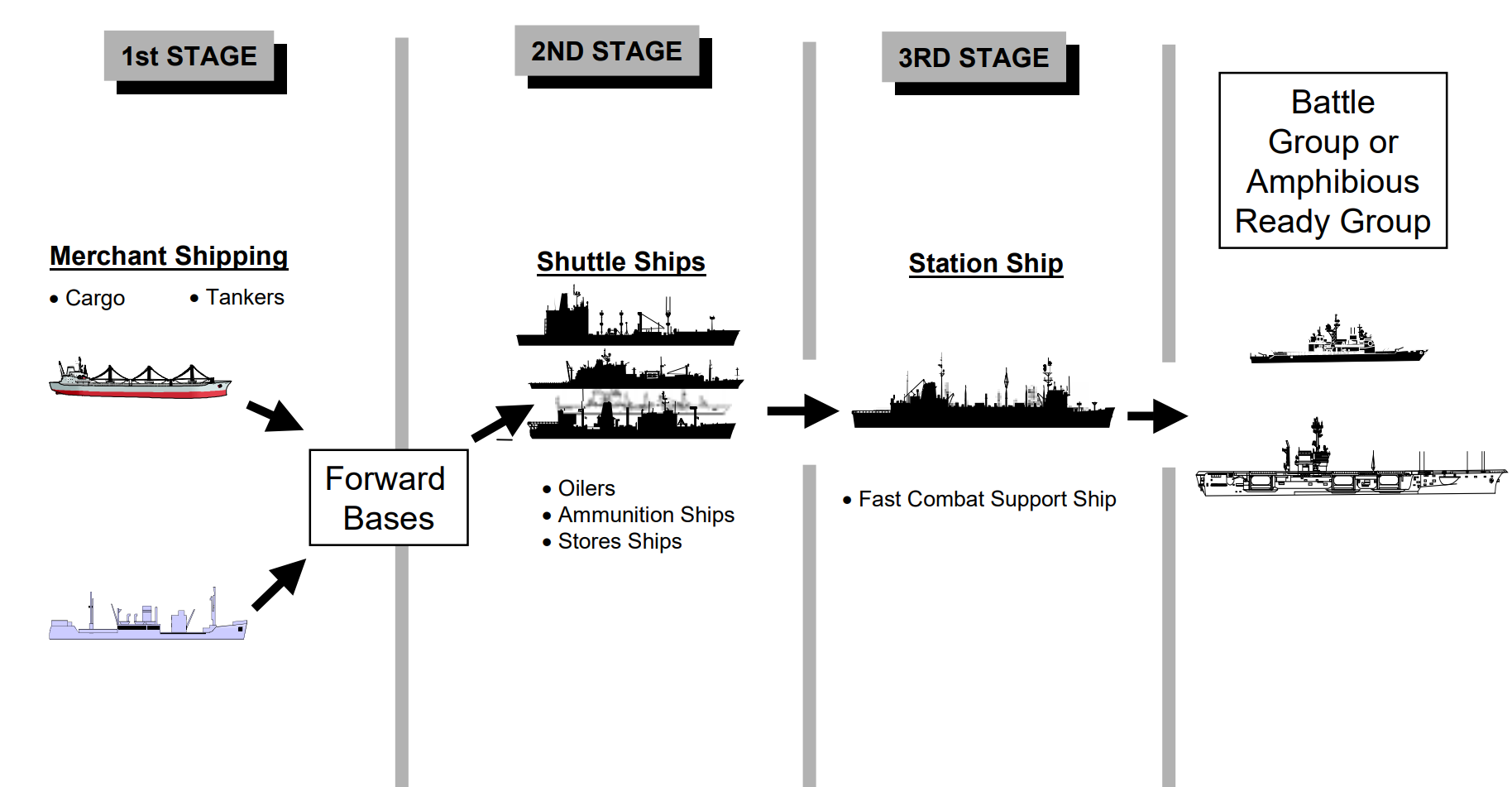
Figure 3: Concept of operations, the three-stage logistics train
In order to meet the requirements of distributed operations, logistics vessels “might need to operate independently…which could put them at risk in contested environments.” Given the lack of additional Combat Logistics Force reserves, significant losses of these vessels could cripple the Navy’s ability to operate offensively. The Navy has also acknowledged that, given the dearth of available surface combatants, most logistics ships will have to transit at least to forward operating bases without an escort. While certain stakeholders, such as the U.S. Pacific Fleet, have begun to examine the problem, the wider Department of Defense doesn’t intend to formally study the impact of the distributed maritime operations modus operandi on Combat Logistics Force operations until 2020. Given that Russia and China both recognize the importance of logistics vessels to enabling American power projection and have developed the means to interdict them, this is an oversight with potentially dire consequences.
The Navy, Military Sealift Command, and the Department of Transportation are trying to address this problem, with mixed results. The Navy is attempting to deal with the lack of civilian mariners through the “Military to Mariner” program, aligning military certifications to those of their civilian counterparts in order to ease the transition into the merchant fleet. This program has not been around long enough to judge its efficacy, but without a comparable increase in the U.S.-flagged civilian fleet to offer additional employment, the effects will likely be muted.
The Navy is also building additional Combat Logistics Force vessels, raising the total number from 29 to 32 by Fiscal Year 2024. This is based on a linear increase in the fleet of surface combatants from 167 to 184 during the same time period. This effort neither accounts for the impact of the proposed distributed operations, nor the insufficiency for existing operations.
Beyond new construction, Congress has authorized the purchase and conversion of civilian vessels for use in the surge fleet as well as the funding of additional service life extensions of existing vessels. There is significant concern that, even with these efforts, the United States will not be able to fulfill its sealift requirements to support operational planning assumptions. The stated requirement of 15.3 million square feet of sealift capacity is currently not met organically by the surge fleet and requires significant augmentation by Maritime Security Program vessels to meet extant requirements. If current trends continue unabated, organic U.S. sealift capacity will atrophy to 75 percent of current levels by 2027, and just over 25 percent by 2033, resulting in a government owned carrying capacity of less than 3 million square feet (see Figure 4).
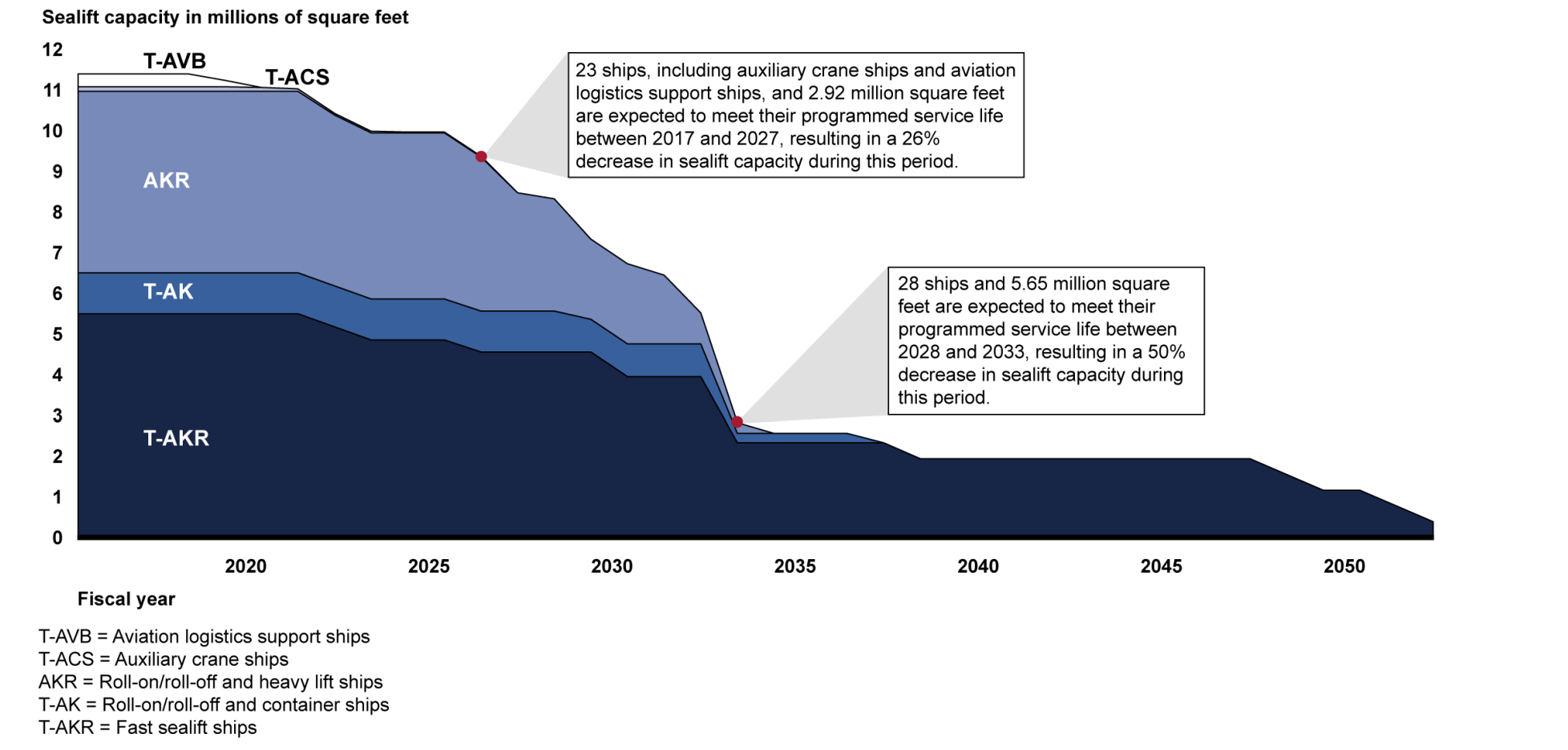
Figure 4: Projected surge sealift capacity decreases over time, based on programmed service life
The Proposal
Thus far, this work has highlighted several problems — such as an insufficient mariner pool, declining strategic sealift capacity, and the specter of an inadequate Combat Logistics Force to meet operational requirements — that, taken in concert, paint a nightmare scenario for strategists and operational planners alike. I now offer a potential solution at an advanced stage of development to compliment ongoing efforts: the Sea Hunter unmanned surface craft.
Sea Hunter is a fully unmanned surface craft that is the result of extensive research and development by the Defense Advanced Research Projects Agency. Since 2014, the craft has successfully demonstrated its ability to navigate independently at sea in compliance with “International Regulations for Preventing Collisions at Sea (COLREGS) in operationally realistic scenarios.” Designed as a technology demonstrator for future unmanned surface vehicles (and potential fully autonomous weapons), the Sea Hunter itself is only 40 meters long and, weighing in at a mere 135 tons, unsuitable for the logistics role. The potential of this system is in taking the inner workings of the Sea Hunter — the autonomous systems that allow it to navigate and operate independently with only mission command updates — and applying them to the design of future logistics ships.
By taking the demonstrated capabilities of autonomous navigation evidenced by the Sea Hunter and applying it to logistics vessels (either purpose-built or retrofitted), the United States would solve a number of the aforementioned problems. The proposed vessel would assume the shuttle ship role, carrying beans, bullets, and benzene from rear areas to the forward operating area. This would facilitate the concentration of the Combat Logistics Force to direct support of combat operations, permitting greater on-station time while the autonomous ships ply the long-haul routes to bring forward supplies to their larger, more capable brethren. They could also supplant vessels in the surge fleet and carry bulk warfighting supplies forward in the event of contingency operations.
In order to achieve rapid development, keep down costs, and ensure delivery of a mature design, the implementation of this logistics vessel would necessarily be phased. Initially, these vessels would be only slightly more advanced than currently demonstrated capabilities, capable of carrying supplies from forward depots to afloat combatants, as well as surge fleet supplies to designated delivery points. Designing systems that can autonomously conduct an underway replenishment would likely delay delivery of a critical capability to the fleet. Rather, early variations of this vessel might conduct skin-to-skin replenishments, where human operators take local or remote control of the supply ship’s cranes and pumps while separated by deployed bumpers. While not currently practiced due to the routine nature of moving underway replenishment, such operations could occur in the thousands of deep-water atolls or isolated islets that populate the Western Pacific, or else in the lee of geographic features. Designed with the equipment necessary to conduct underway replenishment as we understand it today, future technological developments would permit fully autonomous resupply operations. Mirroring the tanker role of the carrier air wing’s UCLASS, the ultimate intent would be the full automation of maritime resupply and logistics. Additionally, these vessels could be used to support risky operations, delivering supplies or heavy equipment to forward outposts where there is heavy risk to the supplying force or insufficient escorts for the mission.
This vessel could be given mission-type orders, getting instructed to carry its goods between two ports, carry its goods along a pre-planned route (similar to German supply vessels supporting U-boats during World War II), or loiter in an area until ordered elsewhere. These orders could come during predetermined update windows via satellite or line-of-sight communications from a controlling unit. This lends itself to disaggregated operations where a surface action group commander might detach its designated supply vessel while pursuing certain task, only to rendezvous at a predetermined waypoint. These arrangements could be conducted with a minimum of betraying electronic emissions which could be used to target such vessels with long range weapons.
There are significant legal impediments to this proposal, foremost of which is the International Regulations for Preventing Collisions at Sea requirement for maintenance of a lookout onboard to prevent collision. Several firms, led by Rolls-Royce, are pursuing modifications of these internationally agreed upon regulations to permit autonomous civilian systems without human beings onboard or in direct control.
In the current environment of renewed strategic competition with Russia and China, the United States is examining the arming of its logistics vessels, evidenced by the inclusion of excess “Space, Weight, Power and Cooling” to support anti-air point defense systems onboard the future fleet replenishment oilers (TAO-205 class). Carrying this interest over to the proposed vessel, this raises significant concern that, if armed, it would be a fully autonomous weapon. Due to the likely requirement for significant periods of independent operations, real-time control of onboard weapons systems is neither possible nor desired due to battlefield constraints. There is currently no provision in international law for fully autonomous weapons, though development and deployment of such weapons is proceeding around the world.
Implementation of autonomous vessels for the purpose of maritime logistics conveys several significant advantages. First, it allows the Navy to overcome the limitations imposed by a dwindling workforce, enabling concentration of precious personnel resources where they are needed most and not for routine navigation or the carrying of bulk cargo. Depending on the number of vessels built, it may allow for sustainment of a war effort without pillaging the U.S.-flagged merchant fleet and debasing civilian trade.
Second, by designing a logistics vessel that doesn’t expect to have a living, breathing crew, the Navy may recapitalize on space otherwise used for human beings. This space could translate to greater carrying capacity or more armaments. Additionally, it could be used to enable smaller and more numerous logistics vessels, allowing the Navy to absorb battlefield losses, bring more supplies afloat, or permit still greater temporal and geographic dispersion. The Sea Hunter program exemplifies the advantages of a similar recapitalization, with the 135-ton vessel (comparable to a large yacht) attaining an operational range of 10,000 nautical miles. The closest comparison is the Cyclone-class patrol vessel, which has less than one fifth of the operational range at over twice the tonnage.
Third, by using a system derived from the existing Sea Hunter, the logistics vessel will benefit from common programmatic developments. This will allow for more rapid refinement of its onboard systems, improving both its seakeeping capabilities and its ability to incorporate potential weapons systems. Further, designing these vessels to operate as a fully autonomous weapons system — at least in terms of point-defense and anti-torpedo technology — would allow the Navy to overcome the dearth of escorts.
Finally, early development of this technology would grant the United States an advantage in a commercial field that is sure to grow in the years to come. Embracing and developing this technology in conjunction with industry partners may lead to a renaissance of the United States’ international merchant fleet, as well as have important impact on domestic shipborne trade that is currently constrained by the Jones Act.
Conclusion
The United States has entered an era of renewed great power competition, though without the means to sustain a prolonged war effort against potential challengers. America’s maritime strategy, which calls for widely distributed operations, is enabled by only 29 vessels of the Combat Logistics Force and supported by a further 121 merchant ships. In order to remedy the Achilles heel that this single point of failure represents, the United States should pursue development of a fully autonomous logistics ship based on the proven and mature technology of the Sea Hunter. Failure to arrest the current atrophy of the Combat Logistics Force and surge fleet will reduce the credibility of the Navy to deter conflict and, when deterrence fails, respond decisively.
Lt. Elee Wakim is a surface warfare officer in the U.S. Navy Reserve. The views expressed here are his own and do not represent those of the United States Department of Defense or any other organization.

